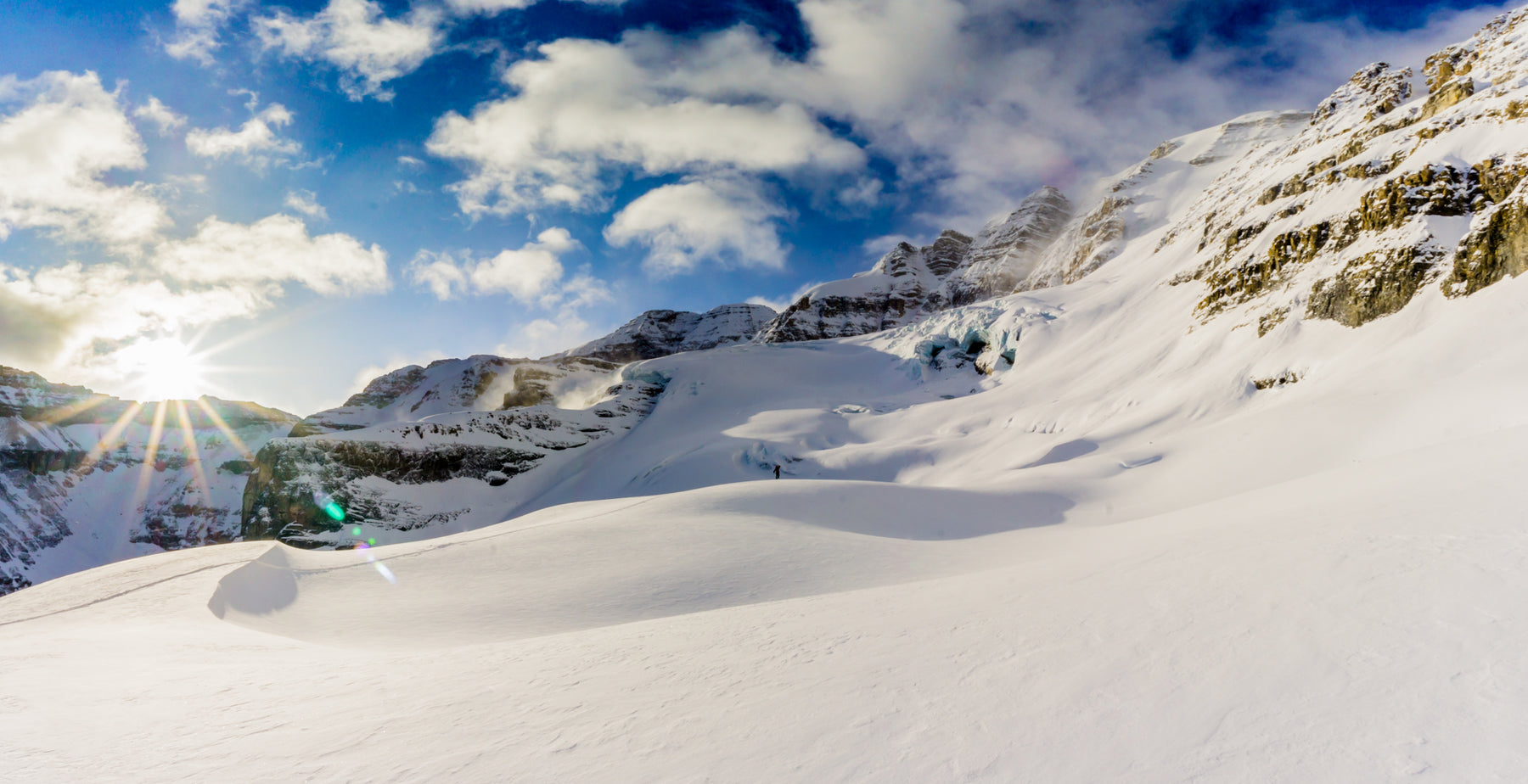Order over $100 and get Free shipping in Canada
Free shipping Across Canada On Orders Over $100

We’ve talked about how to improve your skiing game to ski in backcountry terrain (Part 1), how to equip yourself with the knowledge for safe travel in Avalanch Safety Training (AST 1) in Part 2, to follow the weather and conditions (part 3) and last week we tried to make backcountry equipment less confusing. Well we are at the point of putting it all together and getting out on the slopes.
Getting out into the backcountry and actually doing it is much like planning a trip overseas and alot of the same fears, myths and stories of great times and epic failures. I’ve spent some time in rural China this past year. And I started with knowing where I wanted to go (planning) and then checking accomodations. I knew what I wanted by asking some friends for advice. I don’t speak mandarin. I booked the flights and put pen to paper. I did some research, I used apps like TripAdvisor and blogs, referenced a few more touristy websites and had a great idea where I wanted to go and how I’d get around. I bought a new piece of luggage to get me there and made sure I had my documents ready. Backcountry skiing is much the same. You pick an area, ask some friends, dream about it (ok maybe some late nights worrying, which passes over time) and then plan your day. You check out resources like Avalanche Canada’s app, read a few blogs (TrailPeak, trip reports) and watch the weather. Hiring a guide can be a great way to learn about terrain management, safe travel and help mitigate some of the risk as well. Think about when you learned to ski, you probably went somewhere to learn. Learning the backcountry is much the same. You can get out there and learn as you go. If you want to learn a bit faster, a guide can speed up that process. Check out ACMG’s page for a list of guides in the area or pop by and we can recommend some for you.
One thing that has stuck with me in getting out there is to “go check it out” and not be committed to one place. Getting out on the slopes in a safe way sometimes means bailing on what you wanted to do and backcountry is also about turning back when it doesn't feel right. We were recently out at Ogden Shoulder, a relatively safe area for the conditions yesterday. We had some mid thigh deep powder and great turns. About half way through the day it became very stormy and the snow changed. We called it a day and got back home safely.
The more that you get out there the more you’ll trust your gut, gain confidence in your knowledge and know what to expect, including how you’ll feel. You’ll have great days on the slopes and days that you’ll bail on but that’s part of the adventure. You’ll meet more people who share in the same passion as you and offer some of their experiences as well. It’s a great community.
Ask all the questions that you can think of. Learn from those that you go touring with. The important part is that you get out the door. See you on the skintrack!
Useful resources
Marcus Baranow (aka Confessions of a Ski Bum) put up this awesome online guidebook dedicated to the skiing in Banff National Park. Interactive maps, detailed descriptions and photos, this website has it all for the area between Sunshine Village and Peyto Lake on the highway 93N. You can also download his paper guidebooks, which are the best resources for those areas.
This other free resource is great for shorter tours and slackcountry in the Rockies. You will have to buy the guidebook to access more details about the areas mentioned, but the website is already a good starting point. The Kananaskis part includes some of the more popular areas like Hero Knob and Black Prince.
That one is a paper guidebook. You can find it basically everywhere. This book has some good beta about Kananaskis Country, Banff National Park and a couple areas in the Kootenays. It includes lots of shorter ski tours around Kananaskis and in the Rockies. Use it in combination with a topographic map. Where Chic Scott’s book become an essential is if your thing is traverses, from shorter day trips to month-long traverses.
If you use a Suunto watch, you already have a Movescount account. The website has one very interesting feature called Heat Map that shows you what areas are popular among Suunto users. Want to know what is popular on the highway 93 North? This will tell you. You can enable/disable this mode in the bottom right corner of the map.
Backcountry YYC is a 6000+ member group on Facebook. Some skiers and splitboarders will post trip reports and regular conditions updates on that page. It is a good way to meet other backcountry skiers and to stay updated on what's happening out there
The Avalanche Canada website and mobile app allow backcountry skiers to enter their own condition reports. Those reports are available to anyone directly on the map of the different areas. It looks like each year more people share their observations when they get out skiing. This is a great starting point to look at which areas have better conditions.
{"one"=>"Select 2 or 3 items to compare", "other"=>"{{ count }} of 3 items selected"}